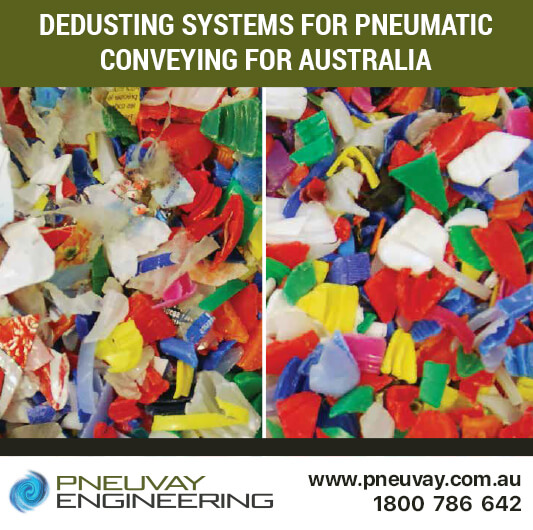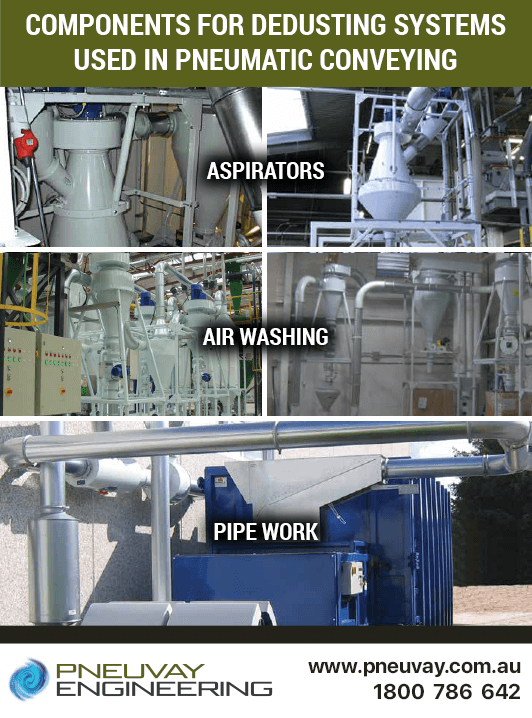See our latest projects and be updated with recent news and features
happening in the world of pneumatic conveying, materials handling
and industrial vacuum systems.
See our latest projects and be updated with recent news and features
happening in the world of pneumatic conveying, materials handling
and industrial vacuum systems.

Thursday, October 31, 2019
Fine impurities can significantly reduce the quality of products made from materials such as pellets, granules and other types of bulk solids. They also reduce the efficiency of the handling and processing systems used for these bulk solids and increase wear and tear on equipment. Dedusting systems play a vital role in cleaning these bulk solid materials from these fine impurities and provide several major production benefits, including:
Read on to get an overview of dedusting and dedusting systems, what materials they are applied to and in what industries they are used. Then learn how dedusting systems are used to improve the performance of pneumatic conveying systems that handle pellets and granular materials.

Dedusting and dedusting systems for pneumatic conveying systems in Australia
Dedusting is the industrial cleaning of bulk solids using some form of pneumatic (compressed air) process. Dedusting removes fine impurities, like dust and contaminants, from bulk solid materials such as:
The most common type of fine impurity is dust. Dust can be generated from pneumatic conveying during processing. The dust becomes attached to pellets or granules and comes in the form of fines, angel hair, streamers and snake skins. Dust can also come from the sawing or cutting of solids such as timber beams, as well as belt conveying of continuous sheets of paper (webs).
Another type of fine impurity is a contaminant that comes mixed with bulk granular materials prior to processing. They include powders, fibres, paper, particles, and other undesired materials smaller in size than the bulk granular material. This is typical when recycling waste and extending the process to separate materials within the waste.
Dust removal and dust extraction is associated with small vacuum equipment that separates dust particles from low volumes of exhaust air at high pressure. This equipment is typically used with power tools in small workshops and factories.
Dust collection and industrial vacuum systems separate dust particles from high volumes of exhaust air at low pressure. They are large vacuum systems that are typically used in medium and large factories and processing plants.
Dedusting systems are often connected in line with material handling and processing systems, such as conveying, granulator and cutting systems. They are used by several major industries, including:
Dedusting systems are effective for improving the performance of lean and dense phase pneumatic conveying systems that handle pellets and granular materials. They can be included as part of a new material handling and processing system installation or retrofitted to existing production environments. Dedusting systems can be used to clean a wide range of pellets and granular materials, and can clean at a rate of 20 kg to 4.5 tonnes per hour.
Temperature, particle shape and many other factors lead to the creation of these fine impurities in pellet pneumatic conveying systems. Friction from the pneumatic conveying of pellets or granules is the major cause of fine impurities such as fines (dust), angel hair, streamers and snake skins.
Dilute (lean) phase pneumatic conveying systems with high air speeds and pipe elbows are likely to experience large levels of fines and streamers. Dense phase pneumatic conveying systems with high pressure can generate dust from friction between pellets or granules and the pipe walls. Read on for detailed information on how to minimise streamers and angel hair in these material handling systems.
Several major types of materials are pneumatically conveyed. Each material type can have dedusting systems applied in several ways to improve the production environment. Some specific dedusting applications that apply to pellets and granules include:
Plastics are a common form of pellet or granule that requires dedust. It includes polyethylene, polypropylene, polystyrene, polyamide, polyurethane, PVC, polystyrene and polymide.
For more than 30 years Pneuvay has been providing help on dedusting systems for Australian companies. We have experience in a broad range of Australian industries, designing and installing dedusting systems that keep:
If you have any questions in relation to dedusting systems, feel free to call us on 1300721458 or send us a message via our Pneuvay website contact page or Pneuvay Facebook page.

Components for dedusting systems used in pneumatic conveying
Get social with us and see the latest news items from:
Discover how we support the night Australian mining industry with our pneumatic conveying systems.
Read on for details about projects we've completed in Western Australia, Queensland, and South Australia.
Pipe and Tube Compression Couplings
Industrial Dust Collectors Systems
Dust Collectors Filters, Cartridges and Bags
Pneuvay Engineering Pty Ltd - Copyright 2020
ABN 49 006 027 541
